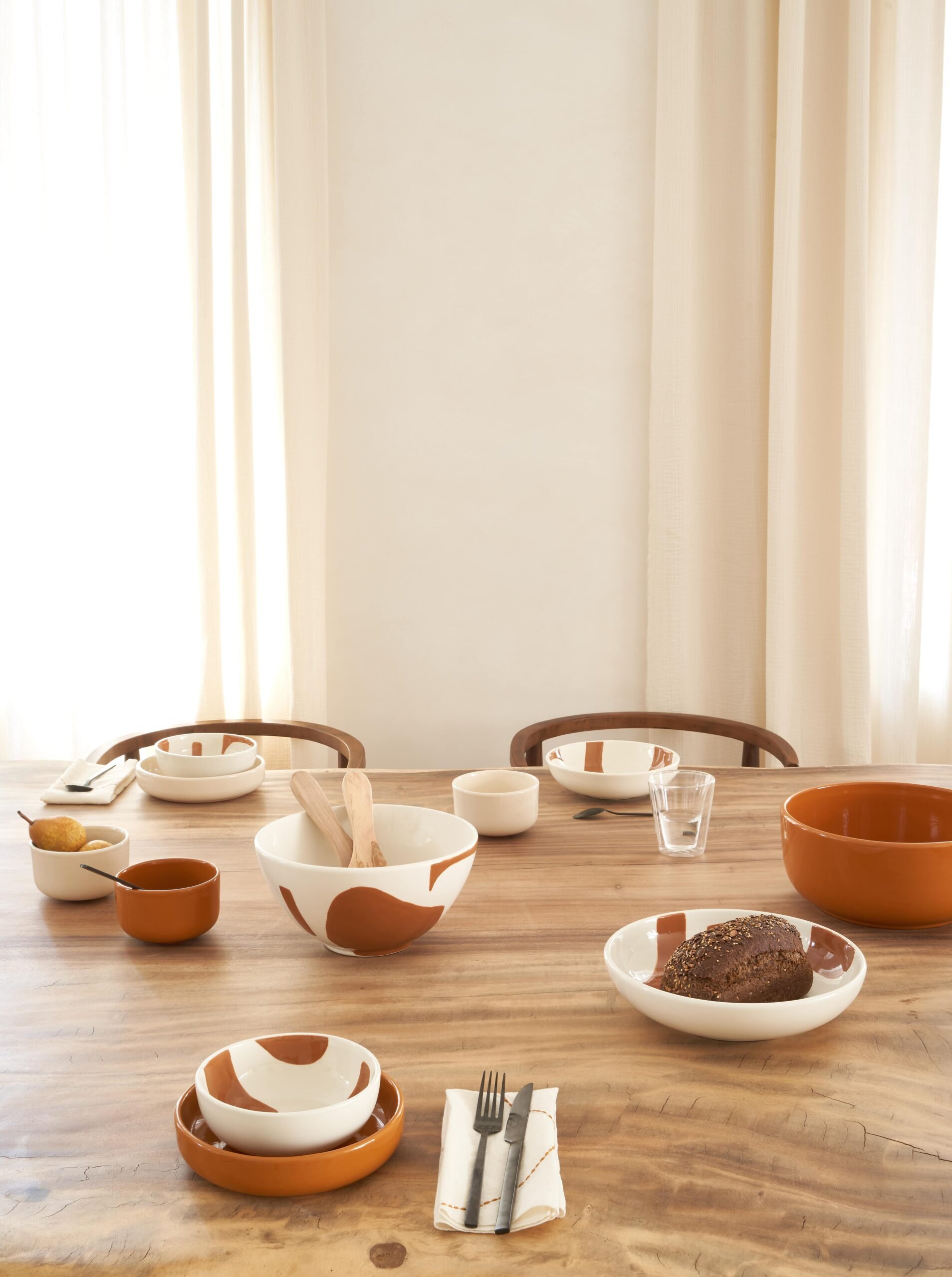Tomorrow's objects: sustainable and respectful of their environment
Three brands recently drew our editors’ attention, each collaborating in their own way with artisanal production units and whose issues are at the heart of each link in the production chain: Golden Editions, Evolution Product, and Homata.
Their work was showcased during the fall Paris Design Week, focused on sustainable design practices, highlighting design approaches that integrate environmentally friendly materials and processes into their cycles.
These projects stand out for their organizational approach, inventiveness, and relationship with their workshop.
Golden Editions
Golden Editions is Sara Efia Reddin’s brand, a British-Ghanaian designer based in Barcelona. Accustomed to the decorative objects collected by her mother, Sara undertook Golden Editions to combine the traditional weaving techniques she knows with new objects from Ghanaian production units.
Sara edits the designs and thinks of the forms that are then studied, appropriated, and crafted by the artisans under the guidance of their workshop manager. The importance given to the collaborative research process lays the foundation for a professional relationship built to last.
Her collection of woven lighting, cushions, and curtains is inspired by the tile patterns that pave the floors and walls of the Spanish metropolis. The first collection was born in the Bolgatanga region, renowned for its ancient mastery of Veta Vera reed basketry. The natural fibers are colored in a cauldron with vegetable dye. The result of these processes is elegant lighting with refined and regular weave offering diffuse lighting as well as beautiful plays of shadows once turned off, thanks to the natural light.
The pieces in Kenté (curtains, cushions) are made by Ewe weavers in the Volta region.
Sara plays with the rhythm of assembling the strips and alternating patterns, which gives rise to imposing and graphic pieces.
Evolution Product
The South African workshop Evolutions Product specializes in the production of dyed linen linens, sometimes embroidered. Created by Amanda du Plessis, the brand has set up its production unit to develop its vegetable dyeing and printing techniques.
One of the particularities of Evolution Product lies in its research work prior to creation. Plants are at the heart of the project. By browsing through historical illustrations detailing certain plants, Amanda decides to combine history, nature, and objects.
Each original design is developed within the team from archival documents (photographs, writings, illustrations) detailing the local flora. Regional raw materials are favored and the processes adopted are designed to be realized within the national territory.
The result is a nostalgic collection whose elements tell the botanical history of the region.
Homata
The French designer Betty Scotté created Homata to materialize the objects she imagined during her travels.
Each of her ideas is associated with a particular know-how. Once this pairing is made, Betty selects the teams of artisans and their workshops according to the specialty they master and the natural materials used.
Glass and textiles are studied and crafted in India, and earthenware objects are created in Tunisia.
Homata's latest collection, Blanca*, presents a series of various interior objects and showcases a range of skills from ceramics to weaving to glassblowing.
*Collection for professionals only
Beyond the careful aesthetics and the simple enthusiasm for the singularity of the handmade, the projects presented try to face the design market's contemporary challenges.
While participating in creating new objects, Sara Reddin, Amanda du Plessis, and Betty Scotté consider all the ecosystems and territorial dynamics to which they give life.
Their projects integrate the social and economic constraints of the places they relate to.









